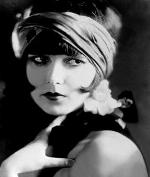Popular Hairstyles of the 1920's
The Popular hairstyles of the 1920's departed from the norm and gave women newfound freedom with their hair.
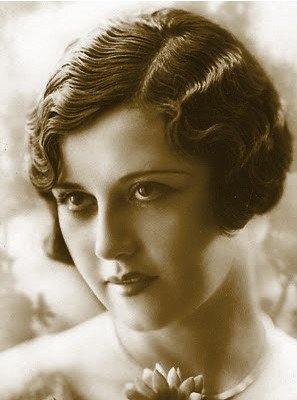
Women had always had long hair. Perhaps the radical changes in fashion dictated changes in the hairstyles as well.
Following a pre-World War 1 trend, many young women began cutting their hair short.
Maybe it's for the best. . . in the years immediately following the war, many young women wore their hair in "earphones" or "cootie garages" which basically made the girls look like human versions of Mickey Mouse.
It wasn't very flattering.
Hairstyle Navigation
Popular 1920's Hairstyles
The Bob
This was the most general of the cuts.
Generally, the bob fell to the bottom of the ears, was cut square around the base of the head. Often the hair was parted on one side. Sometimes bangs were worn, but most often the hair was swept over to one side.
Bobbing one's hair was more the act of cutting it short than the hairstyle itself. You would have "bobbed" hair regardless of how you fashioned it.
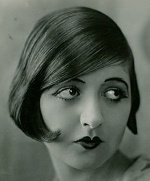 Natalie king with a style of bob cut
Natalie king with a style of bob cutGirls began bobbing their hair for many reasons one of which was so they could fit the fashionable cloche hats over their heads.
Introduced by dancer Irene Castle somewhere around the beginning of World War I. The short bob haircut could be worn with bangs or with the hair brushed to the side.
The bob hairstyle has remained in fashion since the 1920s. One of the most famously worn hairstyles of the 1920s by Louise Brooks and Zelda Fitzgerald, this style has remained in vogue with movie stars ever since.
Cameron Diaz and Natalie Portman have both fashionably worn this style.
Earphones
This was a popular hairstyle for young women (usually high school girls) to wear in the very early part of the 1920s.
This style was also known as “cootie garages,” probably because of their ability to hide lice and other “stuff” in the large bun of hair at the side a woman's head.
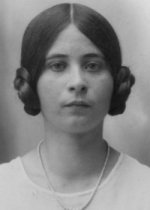 The earphone is a very iconic hairstyle that has roots in 1920's fashion history
The earphone is a very iconic hairstyle that has roots in 1920's fashion historyOf course “earphones” were the style of hair Princess Leia spectacularly wore in the Star Wars series albeit a distinctly futuristic version.
The Shingle
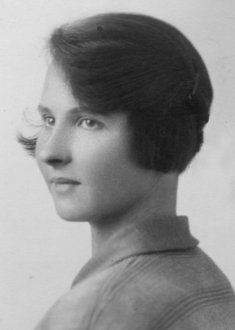 An Example of a non-wavy Shingle cut
An Example of a non-wavy Shingle cutIs basically a bob haircut that tapers down to the nape of the neck. The hair on the neck is razor cut very short into a V shape, often with spit curls at the sides.
This style was also often called the boyish bob and was introduced in 1923.
Katie Holmes is a notable modern celebrity who stick purveys this fashionable 1920's style cut.
The Dutch Boy
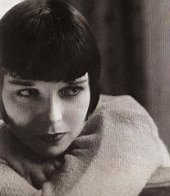 Louise Brooks' Dutch Boy Haircut
Louise Brooks' Dutch Boy HaircutLouise Brooks' "Dutch Boy" hairstyle, though not the most popular, is probably the most iconic style of the 1920's hairstyles.
The very square look with the bangs and sides that frame Brooks' beautiful face show the influence of the Art Deco movement with their sharp angles and square lines.
Brooks will always be remembered as "the girl in the black helmet" because of her hair.
Eton Crop
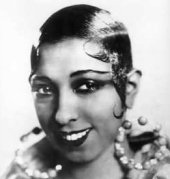 Josephine Brooks in her signature Eton Crop
Josephine Brooks in her signature Eton CropOf all the bobbed hairstyles popular in the 1920s, the Eton Crop is the shortest and most severe. It basically extended the razor shortness of the Shingle all the way around a woman's head.
This style was actually patterned after mandatory boy's hairstyles at London's prestigious Eton Preparatory School.
Chignon
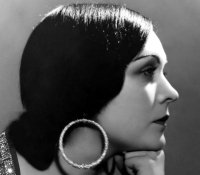 A typical Chignon Cut
A typical Chignon CutFor those women who chose to keep their hair long and pull it back at night when they went out. This process created glossy waves over the head that ended in a chignon or bun, at the nape of a woman's neck.
Bobby pins were used to create waves and to keep the hair in place.
Marcel Wave
Developed by French hairstylist Marcel Grateau. This style was created by using a hot curling iron and flipping the hair upside down.
Finger Waves
Similar to the Marcel Wave, finger waved hair with the fingers (duh) and “finger waving lotion.This process used the fingers holding down a section of hair while combing the hair back. The process needs copious amounts of gel, some patience, and a lot of combing.
F. Scott Fitzgerald's Book About Hair
A good metaphorical story to sum up the direction that women's fashion took in terms of hairstyle is one many people may have not heard of, by a titular author of the 1920's
F. Scott Fitzgerald's short story, "Bernice Bobs Her Hair"
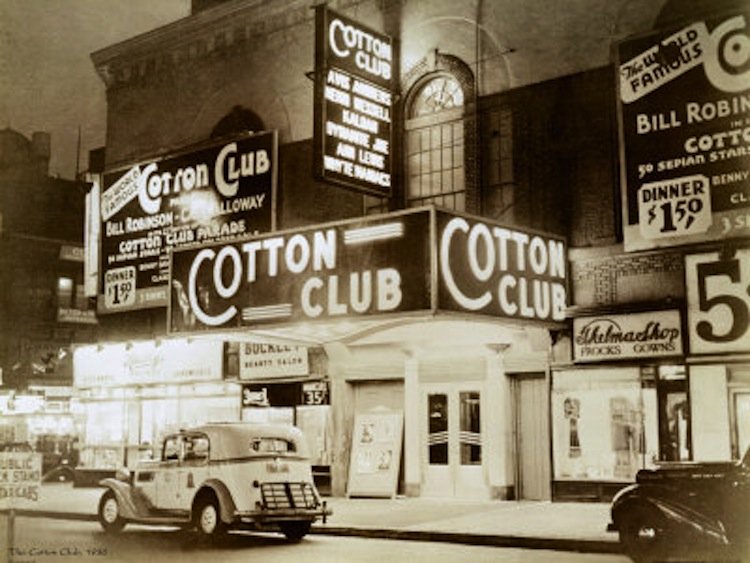 The cotton club would have been a huge spot in the time Bernice would have visited New York
The cotton club would have been a huge spot in the time Bernice would have visited New YorkFitzgerald's story is about a socially inept Midwestern girl who is tricked into cutting her hair short by her rival.
Like many young women of the early 1920s, she runs away from "decent" middle-America, presumably to New York City, the whirling hub of action during the Roaring Twenties.
Go to the top of this page: popular hairstyles of the 1920s
